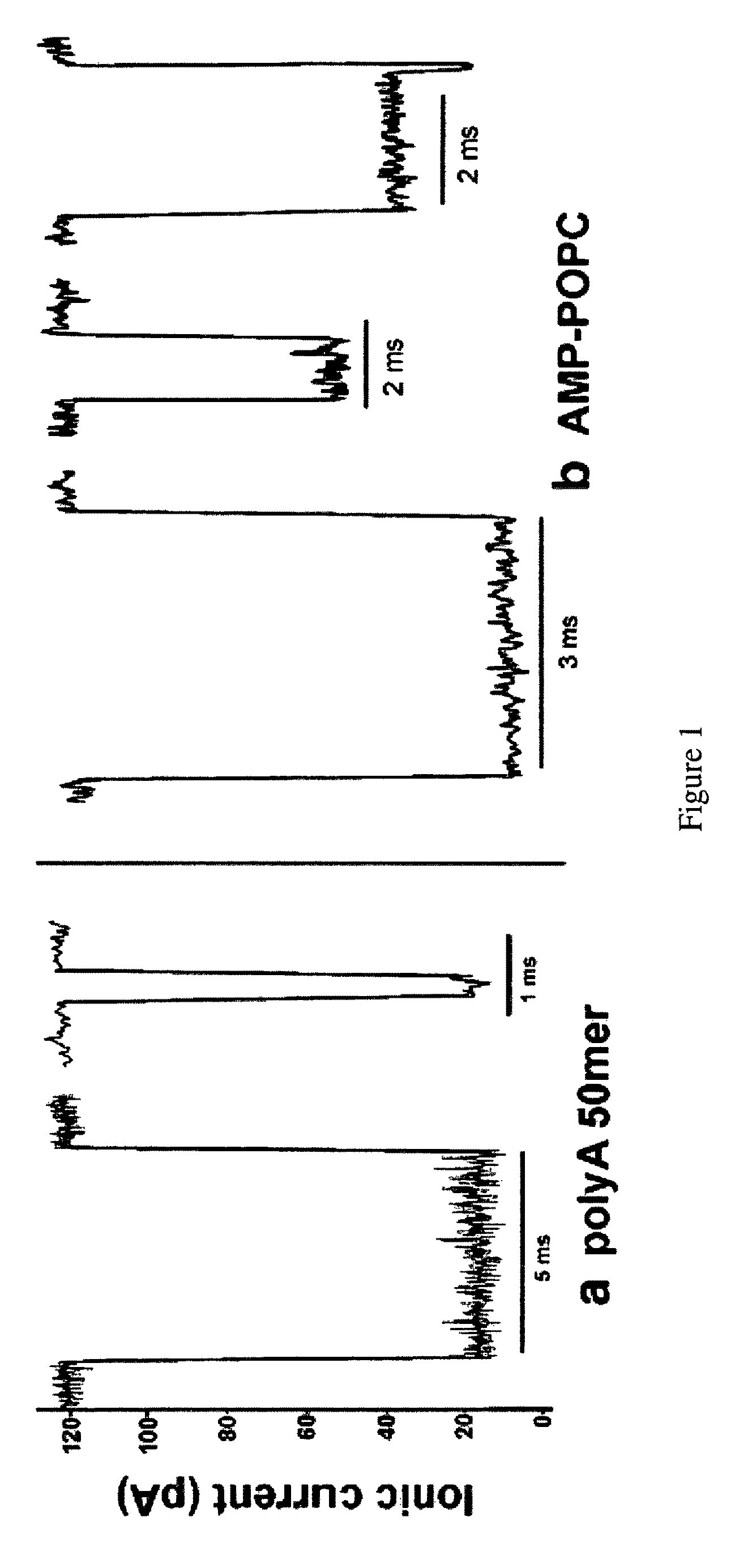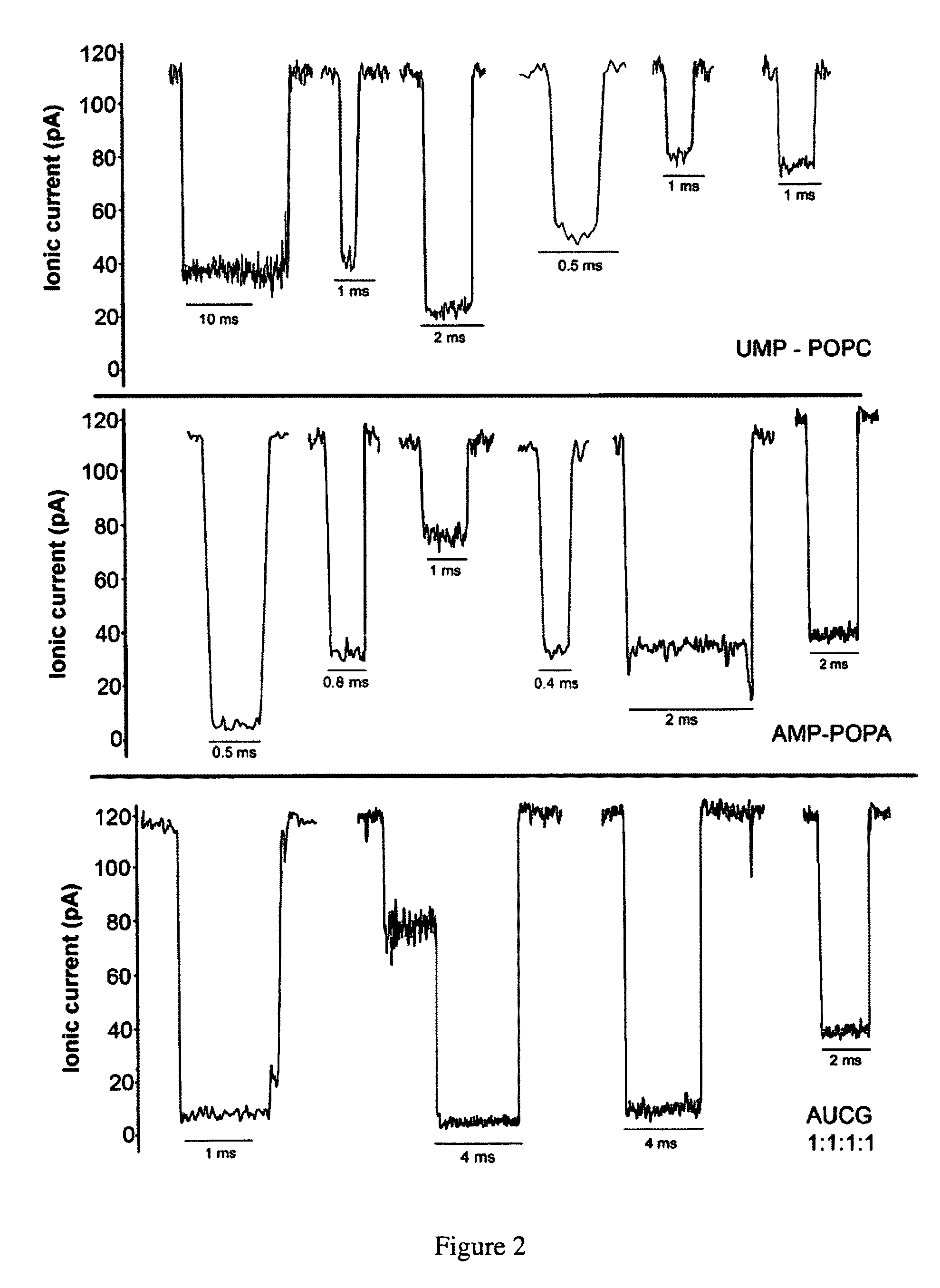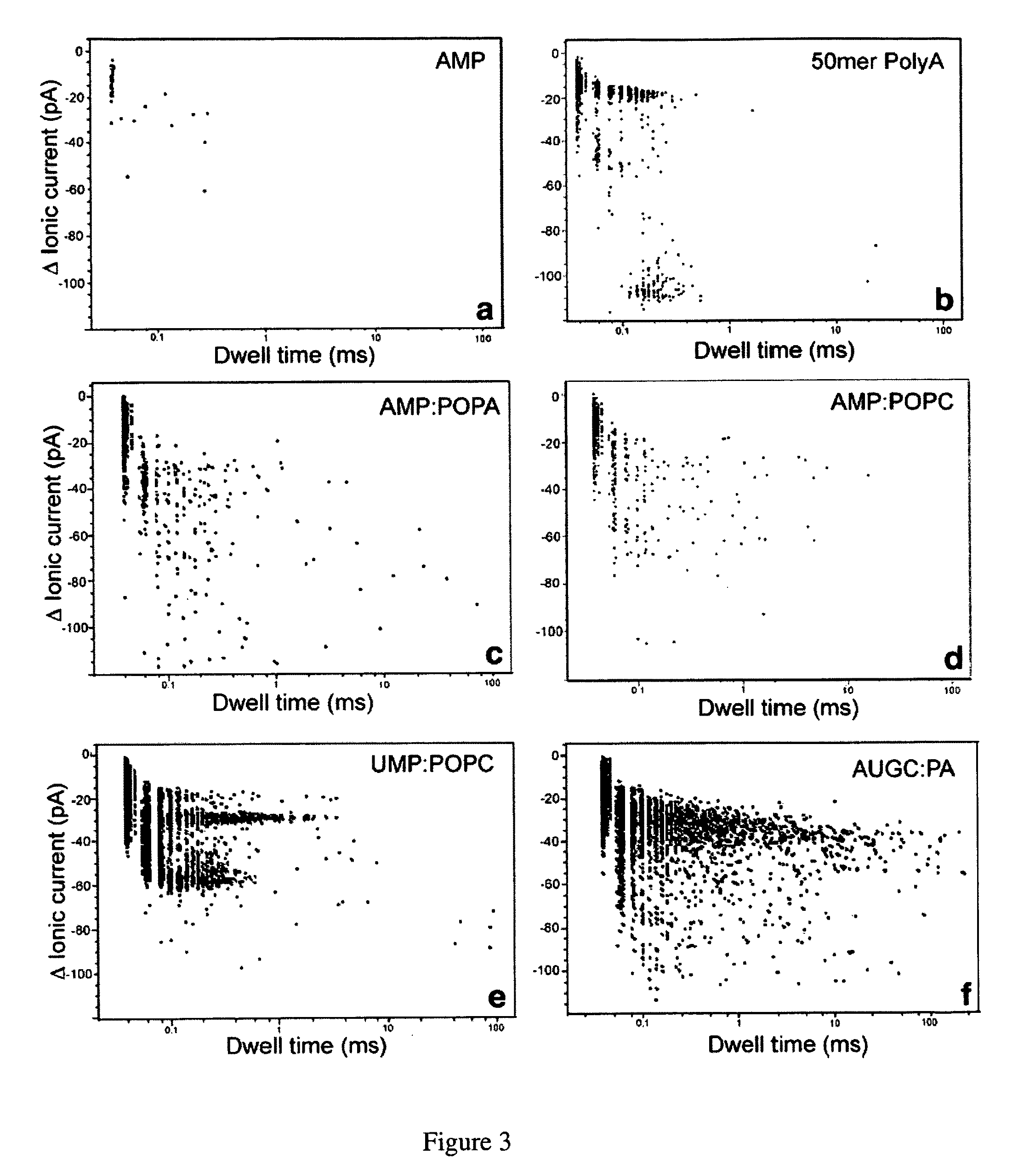Lipid-assisted synthesis of polymer compounds and methods for their use
a technology of polymer compounds and lipids, which is applied in the direction of peptides, sugar derivates, peptide/protein ingredients, etc., can solve the problems of unable to use most of the reagents, unable to meet the requirements of abiotic conditions, and unable to find a plausible source of activated monomers in the prebiotic environmen
- Summary
- Abstract
- Description
- Claims
- Application Information
AI Technical Summary
Benefits of technology
Problems solved by technology
Method used
Image
Examples
examples
[0109]Herein are described several examples to demonstrate the capability of measuring macromolecules and polanions or polycations.
example i
Preparation of Lipid Dispersions
Materials
[0110]Mononucleotides (adenosine 5′-monophosphate and uridine 5′-monophosphate guanosine 5′-monophosphate and cytidine 5′-monophosphate), polyadenylic acid and polyuridylic acid were purchased from Sigma-Aldrich. The lipids, POPC (palmitoyl-oleoylphosphatidylcholine), POPA (palmitoyl-oleoylphosphatidic acid) and LPC (lysophosphatidylcholine) were purchased from Avanti Polar Lipids Inc. All other reagents were of analytical grade from Fisher, Sigma-Aldrich and Avanti Polar Lipids Inc.
[0111]Phosphatidylcholine (POPC) was injected as a 20 mM solution in ethanol into the aqueous phase to produce small unilamellar vesicles (Batzri and Korn (1973) Biochim. Biophys. Acta 298: 1015-1019). Phosphatidic acid (POPA) and lysophosphatidylcholine (LPC enzymatically prepared from egg yolk phosphatidylcholine) were dispersed by 1 min agitation in a vortex stirrer. The lipid concentration was typically 10 mg / ml, and additions of AMP, UMP or 1:1 AMP:UMP mixtur...
example ii
Gel Electrophoresis: 32P-Labeling and Analysis of Reaction Products
[0113]After lipid extraction, samples were ethanol-precipitated and dissolved in 44 μl of water. For dephosphorylation, 1 μl of calf intestinal alkaline phosphatase (CIAP, 1 U / μl, MBI Fermentas) was added along with 5 μl of 10×CIAP buffer, and the reaction was incubated at 37° C. for 30 min, followed by phenol extraction and ethanol precipitation. Glycogen (1 μl of stock 20 mg / ml) was added to facilitate precipitation of small amounts of RNA. The RNA aggregates were pelleted by centrifugation, then dissolved in 16 μl of water and labeled at the 5′-termini with 32P. Phosphorylation was carried out by adding 1 μl of T4 polynucleotide kinase (T4 PNK, 10 U / μl, New England Biolabs), 2 μl of 10×PNK buffer and 1 μl γ-[32P]ATP, followed by incubation at 37° C. for 15 min. The end-labeled RNA-like polymers were purified by G50 spin columns (Amersham Biosciences) and stored at −20° C. For gel electrophoresis, 10 μl aliquots of...
PUM
| Property | Measurement | Unit |
|---|---|---|
| temperature | aaaaa | aaaaa |
| temperature | aaaaa | aaaaa |
| temperature | aaaaa | aaaaa |
Abstract
Description
Claims
Application Information
 Login to View More
Login to View More - R&D
- Intellectual Property
- Life Sciences
- Materials
- Tech Scout
- Unparalleled Data Quality
- Higher Quality Content
- 60% Fewer Hallucinations
Browse by: Latest US Patents, China's latest patents, Technical Efficacy Thesaurus, Application Domain, Technology Topic, Popular Technical Reports.
© 2025 PatSnap. All rights reserved.Legal|Privacy policy|Modern Slavery Act Transparency Statement|Sitemap|About US| Contact US: help@patsnap.com



